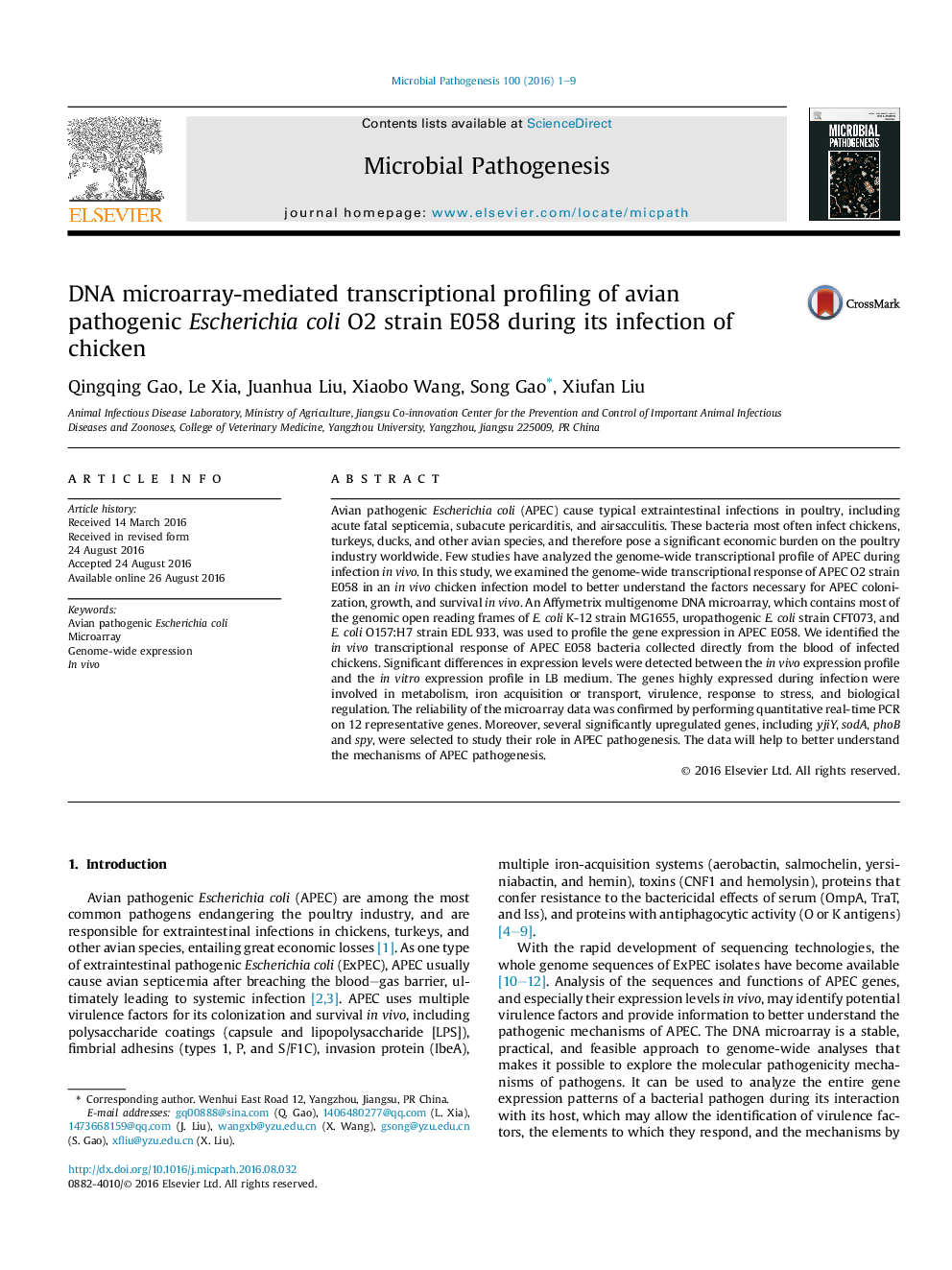| Article ID | Journal | Published Year | Pages | File Type |
|---|---|---|---|---|
| 3416196 | Microbial Pathogenesis | 2016 | 9 Pages |
•In vivo transcriptional response of APEC E058 bacteria collected from the blood of infected chickens was identified.•The genes highly expressed involved in metabolism, iron acquisition, virulence, stress response, and so on.•The reliability of the microarray data was confirmed by performing quantitative real-time PCR on 12 representative genes.•Several significantly upregulated genes were selected to study their role in APEC pathogenesis.•The data will help to better understand the mechanisms of APEC pathogenesis.
Avian pathogenic Escherichia coli (APEC) cause typical extraintestinal infections in poultry, including acute fatal septicemia, subacute pericarditis, and airsacculitis. These bacteria most often infect chickens, turkeys, ducks, and other avian species, and therefore pose a significant economic burden on the poultry industry worldwide. Few studies have analyzed the genome-wide transcriptional profile of APEC during infection in vivo. In this study, we examined the genome-wide transcriptional response of APEC O2 strain E058 in an in vivo chicken infection model to better understand the factors necessary for APEC colonization, growth, and survival in vivo. An Affymetrix multigenome DNA microarray, which contains most of the genomic open reading frames of E. coli K-12 strain MG1655, uropathogenic E. coli strain CFT073, and E. coli O157:H7 strain EDL 933, was used to profile the gene expression in APEC E058. We identified the in vivo transcriptional response of APEC E058 bacteria collected directly from the blood of infected chickens. Significant differences in expression levels were detected between the in vivo expression profile and the in vitro expression profile in LB medium. The genes highly expressed during infection were involved in metabolism, iron acquisition or transport, virulence, response to stress, and biological regulation. The reliability of the microarray data was confirmed by performing quantitative real-time PCR on 12 representative genes. Moreover, several significantly upregulated genes, including yjiY, sodA, phoB and spy, were selected to study their role in APEC pathogenesis. The data will help to better understand the mechanisms of APEC pathogenesis.
